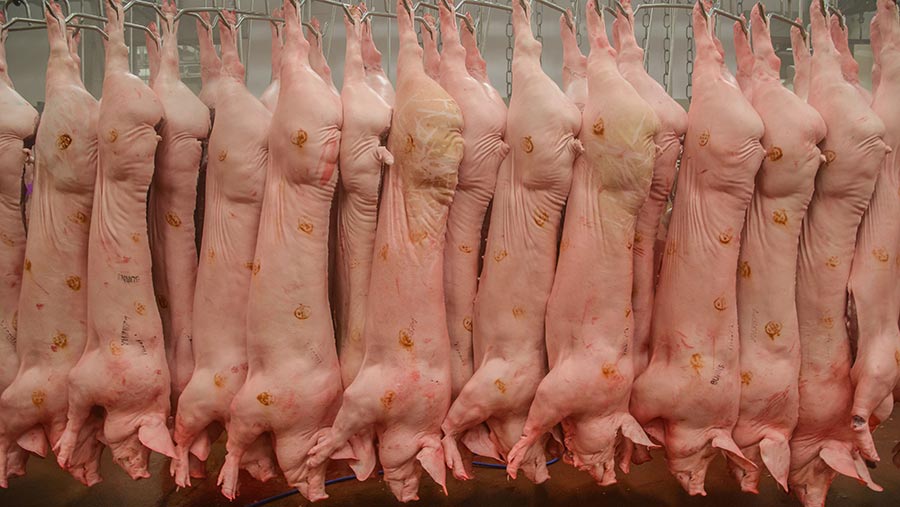Pig and poultry producers face slaughtering delays
 © Rex/Shutterstock
© Rex/Shutterstock Dwindling stocks of carbon dioxide, a vital component of the slaughtering process used in many abattoirs, could have an impact on pig and poultry supply chains as early as next week.
About half of pigs and up to 70% of poultry in the UK is slaughtered using carbon dioxide gas, but Farmers Weekly understands that some abattoirs have supplies to last them only a few days.
See also: How a pig farmer has lowered production costs by 3.8p/kg
A drop in the pace of slaughtering could have a knock-on effect down the supply chain as finished animals would be unable to leave farms, and farmers would be unable to restock with new batches of animals.
The carbon dioxide shortage means some abattoirs have already had to scale back production as they switch to alternate forms of slaughter, such as electric systems, which are still the primary method in some abattoirs.
What is the problem?
Carbon dioxide is a by-product of fertiliser production. However, a combination of plants closing for essential maintenance works and other plants shutting down because of unexpected technical failures has led to a huge shortfall in stocks of the gas across the continent.
Farmers Weekly understands that several gas companies have said they have been unable to fulfil contracts, but the situation is mixed, with some abattoirs saying they still have three to four weeks supply.
How could pig production be affected?
About half of the pigs in the UK are slaughtered using carbon dioxide. However, the vast majority of abattoirs have contingency plans enabling them to switch to secondary methods of slaughter.
The situation is disruptive but not disastrous, according to pig industry consultant Peter Crichton.
“Most abattoirs using this method are still able to kill, but the kill rate is slower in places,” he said.
“The majority [of abattoirs] have safeguards in place and have a plan B, having retained older systems as a back-up.”
Mr Crichton recommended that pig producers should not sit on animals and should sell now if possible.
Industry has been working closely with the government to manage CO2 stocks, and veterinary adviser Dr Craig Kirby, of the Association of Independent Meat Suppliers, stressed that this was not a situation that would imminently lead to empty shelves.
“The best advice for producers is to keep in touch with factories and make sure that everything is scheduled and operating normally,” he said.
The cross-industry group, including the British Poultry Council (BPC), National Pig Association (NPA), British Retail Consortium (BRC) and Defra, would be holding a conference call on Monday to assess the situation.
How could poultry be affected?
As with pigs, carbon dioxide is widely used in the slaughter of chickens and also in the packaging of the meat, with between 60% and 70% of chickens that enter the food chain slaughtered using the gas.
Richard Griffith, chief executive of the British Poultry Council, said production levels on slaughter lines had not been affected yet, but abattoirs were “living hand to mouth” on desperately short supplies.
He said there could be no guarantee that slaughter levels could be maintained at full output beyond the weekend.
The BPC was still hopeful that a crisis could be averted.
Mr Griffith’s advice for all poultry farmers is to keep closely in touch with their supply chain for updates on the situation and to proceed as normal for the time being.
